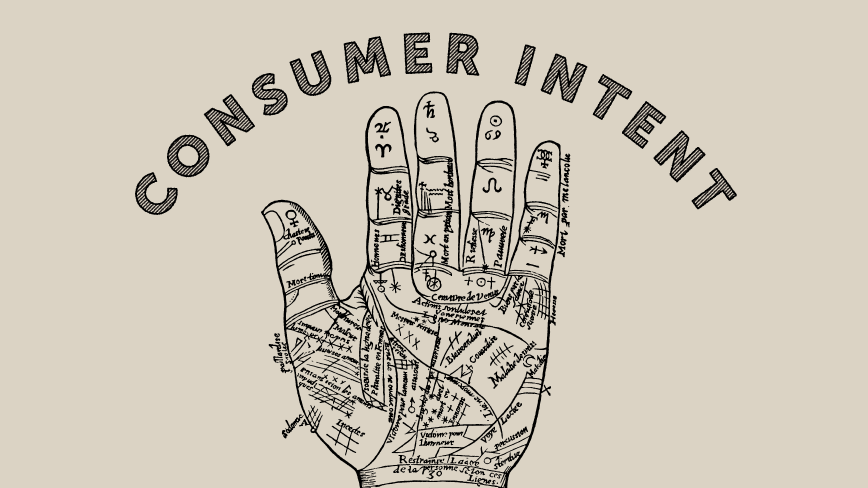In an era where most people have smartphones and want things now, brands are adopting intent-based marketing strategies to satisfy consumers’ immediate needs.
Our modern tendency to reach for our phones any time we need information has caused many marketers to pivot strategies. In an age where information is always accessible, audiences can instantly determine whether a product or service is relevant to their needs. Brands are going to have a tougher time persuading audiences to change their mind if the connection between product and need seems distant or illogical. Instead, many brands are finding ways to adapt their content and marketing approaches to actually be relevant to consumer needs, with a closer eye on how these needs spur consumer action online, especially on mobile.
Brands that can respond with content or services that immediately satisfy consumers’ needs can earn their clicks, and just might earn their business. Thinking about intent can therefore accelerate the path to purchase and help certain brands provide real value in a time where information is literally at our fingertips. Here’s how these intent-based marketing strategies work for some brands.
SEO Started Intent-Based Marketing
Intent-based marketing ultimately has its roots in search engines. Companies wanting to capture traffic from search users had to think about the words someone would use, such as “how to make ice cream from home,” and respond with content using those keywords.
This content-based strategy led to search engine optimization (SEO) marketing, but brands quickly realized that having the right keywords wasn’t enough. They also had to provide information on what the search users were actually looking for. Otherwise, they would lose their clicks to someone else. In other words, to be relevant, the brand had to predict what the search users intended to do and incorporate that into their content.
Now, certain companies use intent to get even more sophisticated with their content strategy. They develop tailored content for specific personas, recognizing that different people can enter in the exact same search term for different reasons. The aim is to stay relevant and contextual, reflecting their desire to satisfy the intentions of the search user.
Mobile Changes Everything in 2017
The rise of smartphone adoption only accelerated companies’ focus on user intent. The average person checks or uses their phone around 150 times a day, and each time may be related to a different intention based on a need.
One of the first companies to recognize the significance of this shift was Google, who began to optimize the way websites were indexed and displayed in mobile search results to improve the user experience. The goal now is to display as much information as possible in an easy-to-read format, while reducing things that can make mobile users frustrated, such as slow page load times. Pages that don’t meet these standards will be penalized and ranked lower than pages that follow the guidelines.
In response, some brands are trying to deliver information relevant to search users’ needs while improving the mobile friendliness of their web pages according to rigid, standardized Accelerated Mobile Page guidelines. This includes stripping out things that hurt load times, such as pop-ups or intrusive standalone interstitial ads.
Making the Most of the Micro-Moment
82% of smartphone users search for businesses near them and searches using the keywords “near me” have doubled in the past year, introducing the “micro-moment.” A micro-moment is a shift in consumer behavior — from planning to spontaneity — due to the ability to search for things to do or buy near them in real-time. Mobile users largely drive this increase because they are looking for businesses to visit now, while they are already en route. These consumers often have an immediate need, like finding the nearest coffee shop while visiting a new city, and they are dependent on their smartphone to help research the best location, instantly.
Businesses have responded by supplying as much information up front on search engine listings as possible, including making hot inventory items front-and-center during local product-focused searches through the use of schema markup.
Intent-Focused Platforms Cater to Mobile Users
As websites adjust to fit the intent-driven actions of search users, major platforms are similarly stepping up to satisfy intent with immediacy. Intent-focused features matter particularly to mobile users, who tend to have less time, less patience, and less willingness to go through additional steps compared to someone sitting at a desktop computer.
Pinterest has been making strides in this department by adding new features that eliminate in-between steps to an online purchase. If mobile users see something they like in a home design-related pin, for example, the new Visual Search feature helps them instantly grab ecommerce product listings from the photo. They can then click-to-buy to add the product into their shopping cart and continue browsing until they are ready to make their purchase.
Features like these simply do not work if they attempt to persuade users through “hard sells.” Instead, they recognize the reasons shoppers go online and then offer helpful advice or easier paths to purchase to satisfy their intended goals.
At the same time, these new consumer actions can provide marketers with more resources in the form of data, which helps them learn how certain segments decide to buy and how to optimize conversion rates to be higher than ever before. So, by working with the best of intentions, marketers can reap the best of rewards.

